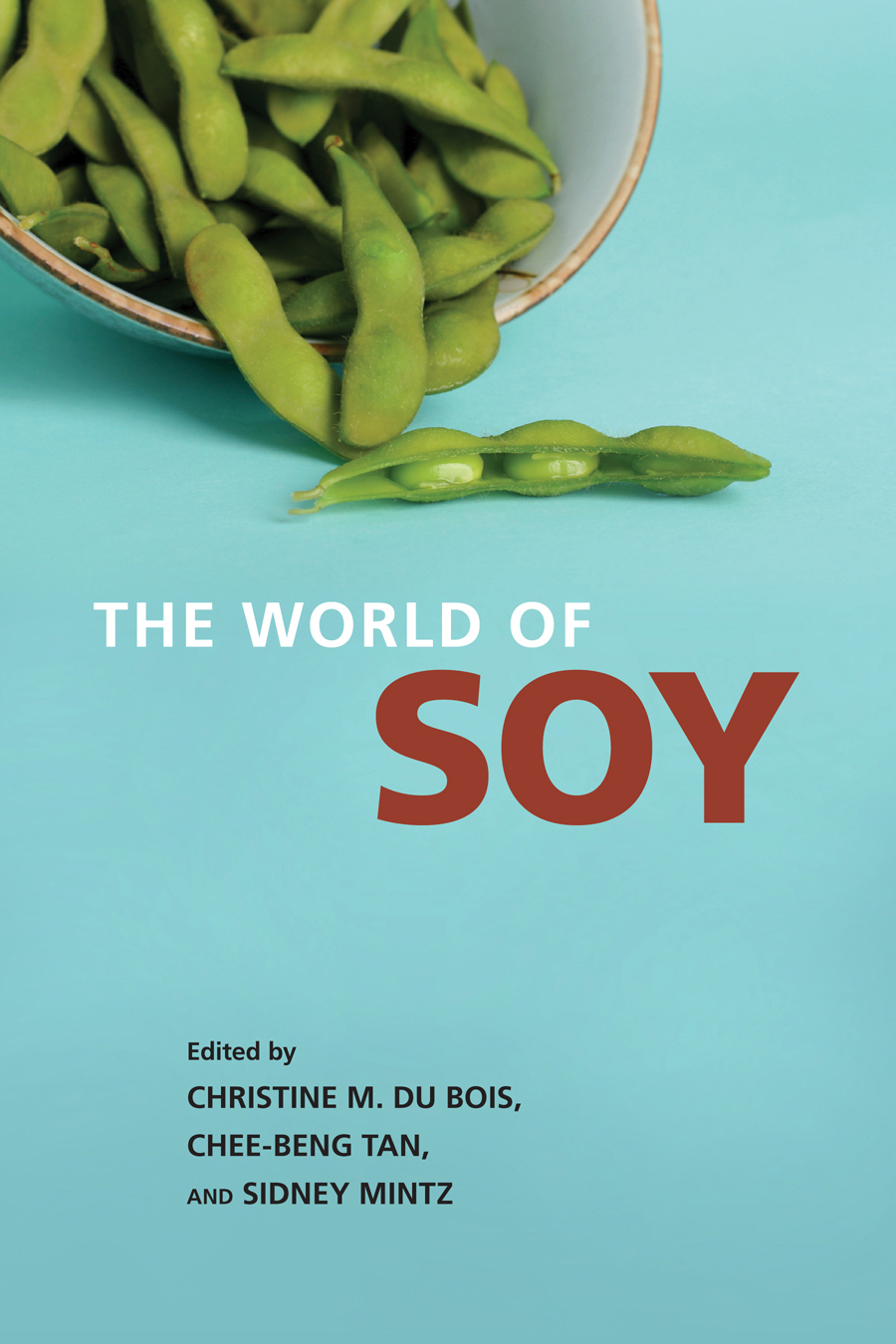|
Read 13151897 times
Connect me to:
|
World of Soy, Theby: Christine M; Ta, Chee-Beng; and Mintz, Sidney W., editors Du Bois
Urbana IL:
University of Illinois Press 2008, Hardbound
ISBN: 978-0-252-03341-1
Reviewed by: Jacqueline M. Newman
Spring Volume: 2009 Issue: 16(1) page(s): 21 and 22
 This phenomenal book about a phenomenal legume has two large sections with fourteen chapters. It is written by a variety of experts, discusses and details acceptance of soy over time and throughout the world, and needs a follow-up volume exploring it in yet other countries. The many ethnographic studies are great reads with fantastic information. Do not miss them. The book's genesis was a conference, then many funded and acknowledged resources. Together they make for jammed information between the covers. Appreciate all the outstanding information because it educates and updates. We are just greedy, it was so very good, we just want more. This phenomenal book about a phenomenal legume has two large sections with fourteen chapters. It is written by a variety of experts, discusses and details acceptance of soy over time and throughout the world, and needs a follow-up volume exploring it in yet other countries. The many ethnographic studies are great reads with fantastic information. Do not miss them. The book's genesis was a conference, then many funded and acknowledged resources. Together they make for jammed information between the covers. Appreciate all the outstanding information because it educates and updates. We are just greedy, it was so very good, we just want more.
Glycine max, soy bean's botanical name, is a critical and versatile food illuminated in more ways than can be counted. Its historical and economic importance, from fire through archeological documentation, and on to today is terrific. Reading every page is a valuable study of a food important for everyone. Knowledge provided in the chapters and the large and fantastic reference set are gems shining for us all. In the first section, read about early use of soybeans, written by H.T. Huang. Following that is another by Lawrence Kaplan about its history in human nutrition. Then comes the Sidney Mintz chapter detailing fermented beans with western notions. The section by Christine M. Du Bois concludes with genetically engineered soy; it is written in cooperation with Ivan Sergio Freire de Sousa and explores possibilities present and future. There are these and so much more, every page is not to be missed. Section two's ten ethnographic explorations relate to things Chinese, the first, general Chinese foodways by Chee-Beng Tan. The next by Jianhua Mao explores tofu feasts in Sichuan. Both are fascinating. Others are about soy use in Japan, South Korea, Vietnam, Indonesia, United States, Brazil and Argentina, too, Bangladesh, and West Africa. The last chapter is about soy's dominance and destiny is by Du Bois and Mintz, is a fantastic look into the future. Appendices follow with scientific names for plants and edible fungi; and more about tofu in Chengdu. With so much good material, we feel greedy wanting information about the dozens of other countries where soy is consumed. Must highlight the Mintz chapter with cogent information about soy in early China including its bean and leaf consumption. It explains why soy was held in low esteem, considered coarse, lacking in sweetness, difficult to cook, and thought hazardous to health. Not until the Han Dynasty, when fermented, did soy become an acceptable food. Do get a copy and fill up on its terrific information; not reading this book can be hazardous to your intellectual health.
|

 This phenomenal book about a phenomenal legume has two large sections with fourteen chapters. It is written by a variety of experts, discusses and details acceptance of soy over time and throughout the world, and needs a follow-up volume exploring it in yet other countries. The many ethnographic studies are great reads with fantastic information. Do not miss them. The book's genesis was a conference, then many funded and acknowledged resources. Together they make for jammed information between the covers. Appreciate all the outstanding information because it educates and updates. We are just greedy, it was so very good, we just want more.
This phenomenal book about a phenomenal legume has two large sections with fourteen chapters. It is written by a variety of experts, discusses and details acceptance of soy over time and throughout the world, and needs a follow-up volume exploring it in yet other countries. The many ethnographic studies are great reads with fantastic information. Do not miss them. The book's genesis was a conference, then many funded and acknowledged resources. Together they make for jammed information between the covers. Appreciate all the outstanding information because it educates and updates. We are just greedy, it was so very good, we just want more.